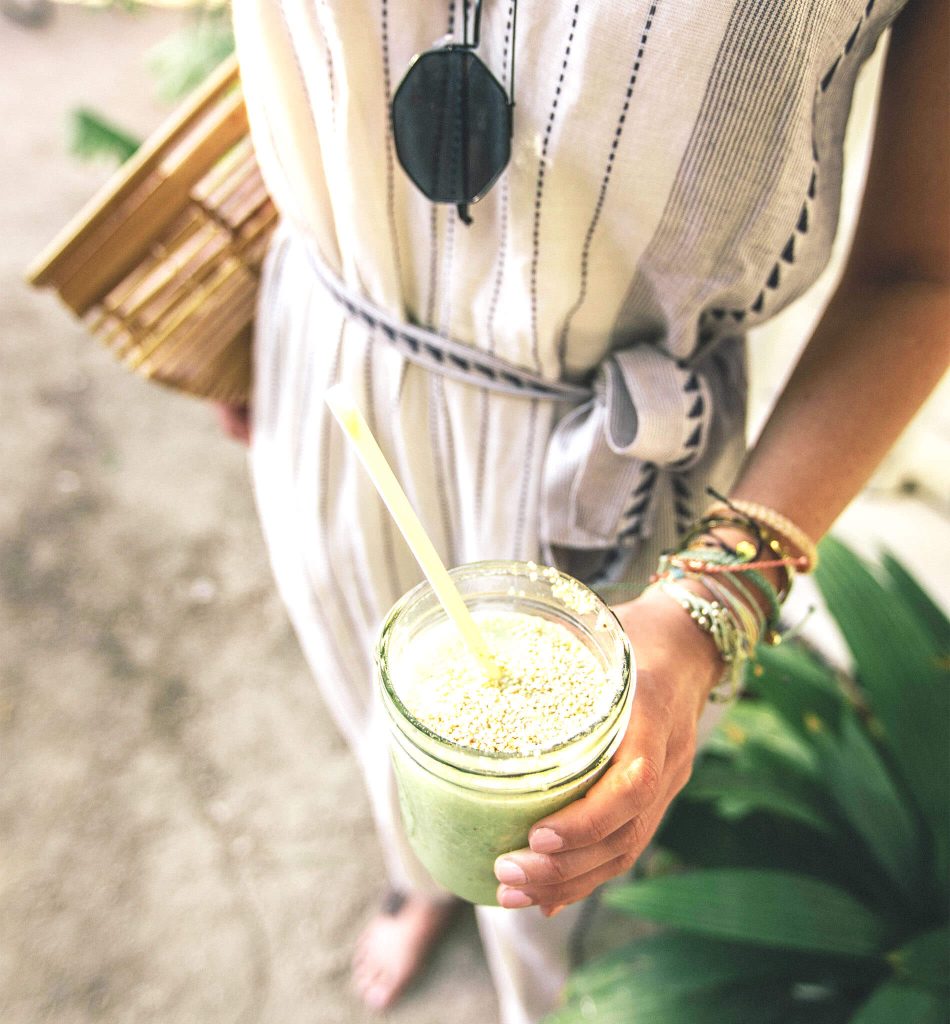
WHAT YOU MIGHT BE MISSING ABOUT SMOOTHIES
SMOOTHIE SEASON IN ITS FULL!
I actually love smoothies all year round. They’re often part of my day; I like the easiness of them and the fact that you can pack them with lots of nutrients and all under 5 minutes.
But, how to actually design a perfect smoothie? The one that will fill you up and won’t give you the sugar crash 1-2 hours after?
Simply put, you want to include the macros (i.e. protein, carbs and fat) plus a ton of micro nutrients (vitamins, minerals). You can also practice to make smoothies lower in sugars – try to make it more veggie than fruit based, and/or include lower sugar content fruits.
What’s in your smoothie?
Now, since smoothies can often be seen as a snack or a drink, we tend to not pay attention to what exactly we put in them. ‘It’s just a smoothie’ – and then 15-30 mins later we proceed with breakfast or lunch.
It may (or may not!) surprise you that a smoothie can be a meal itself.
By now you’re probably familiar with my philosophy- I’m guided by a holistic approach to eating and don’t often talk about calories. A smoothie can however be high calorie and nutrient packed, in which case it means that it can and should be considered as a meal (not a snack).
Let’s picture it: you put in a banana, large handful of strawberries, spinach, protein powder, some oats, nut butter or avocado, and some milk. Then you may top it up with some nuts, granola or fruit. When it’s all nicely blended, it may not seem that much. But, when you look at it as a bowl of oats with protein and ½ cup of strawberries and a medium banana, with extra toppings, it suddenly seems like a ‘proper’ breakfast. There’re plenty of nutrients (and calories) in it, but it’s harder to ‘see’. Right?

Sugar content
I sometimes see smoothie recipes out there that call for 2 bananas, extra other fruit and veg on top of it, powders or yoghurt. Mind you, as much as I root for fresh produce, a small banana (around 100g) it’s approx. 23% of carbs and around 12g of sugar. It’s actually more than a normal slice of sourdough bread, but I bet you don’t see it as ‘the same’ kind of macro nutrient, do you? If you’re trying to watch your carb intake and maintain your healthy weight, you might be wanting to start paying attention what’s going into your smoothie alongside other meals you’re having that day.
Healthier Swaps
As a healthier replacement, I usually recommend 2 mighty underrated vegetables: cauliflower and zucchini. 100g of each would give you somewhere between 3-5g of carbs plus both are rich in fiber, vitamins and minerals. Cauliflower is a great antioxidant too, which not many of us realize! The best way to add them to your smoothie is fresh or frozen – you can cook them slightly and store in a freezer ready to use. Alternatively, buy the ready, frozen veggies. Another great superpower of both zucchini and cauliflower (besides the nutrition content) is that they both add creaminess to smoothies and are neutral in taste. So, they won’t overpower your smoothie and you can pretty much add them to any of your creations.
Fat in smoothies?
Yes please! All vegetables and fruit containing fat-soluble vitamins A, D, E and K need fat to allow better absorption. So, you want to make sure to add a little of it to enhance the nutrition intake. This is the reason why we also always hear recommendation to add a bit of olive oil to our salad!
Also, fat helps with satiety, so adding it to your smoothie will make sure you’re nicely full for longer. Here’re a few examples of what you could add to your smoothie to hit that healthy fat mark:
1 tbsp of either: chia seeds, ground flaxseed, hemp seeds
1-2 tbsp avocado
A few nuts (e.g. 2 brazil nuts and 2 walnuts)
1 tsp peanut butter or another nut butter
coconut milk
1tsp MCT oil/ coconut oil
Smoothie vs. smoothie bowl
Smoothie bowls are technically smoothies with less liquid. It makes it thicker and less pourable– you can enjoy it in a bowl and eat with a spoon.
One thing I love about a good smoothie bowl is that it’s thicker and it forces you to chew the ingredients. Remember, smoothie is still a meal and that digestion starts in the mouth. Chewing your meal properly sets up for better digestion – the salivary glands and digestive enzymes get stimulated right away to start the complex digestive process.
Why to love smoothies
I love the fact that you can squeeze use variety of great fruit and veg into a smoothie and make it a great nutrient dense meal. Because the ingredients are blended and some fiber is extracted, it makes it easier and faster to digest which means that nutrients are available and absorbed quicker.
- easiness of prepping it when you’re short on time
- perfect when you want a serious dose of nutrition – toss in a few favorite healthy ingredients, add superfoods or protein and you’re good to go
- you can drink it or eat it with a spoon with a few tasty toppings
- breakfast, lunch or dinner option- no rules there!
- it takes a few minutes to make and usually requires only one kitchen item to wash
- the flavor/color/nourishment possibilities are endless.
What’s not to like? 🙂
Do you make smoothies at home? Do you treat them as a snack or a meal?
If you’re looking for some flavors and combo ideas, check it out here or here.